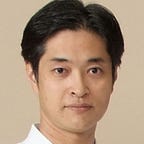As mentioned in the article “Shutō Uke in Old Style,” I mentioned that Funakoshi Gichin’s Shutō Uke was similar to Motobu Choki’s Shutō Uke. Unlike the Itosu lineage, they are characterized by holding the arm in the upper position and extending it straight out without bending the wrist.
By the way, I mentioned in that article that Funakoshi’s Kūsankū Dai was taught by Asato Ankō. I wrote that Gima Shinkin testified to this, but I was mistaken. (Note) This is not Gima’s testimony, but that of Fujiwara Ryōzō. The following is a quotation of the relevant passage.
Fujiwara: By the way, when Rear Admiral Yashiro Rokurō landed in Naha, the “Pinan” kata created by Master Itosu Ankō had just been announced (April 1904), so it was not very widely spread, was it?
Gima: No, I think it was widespread to a certain extent among the students of the elementary schools in Naha City. However, in the case of the Normal School, the main focus of training was “Naihanchi,” so the “Pinan” kata was only practiced on a voluntary basis by those who were interested in it. Yabu Kentsū’s teaching policy was that if you have time to practice “Pinan,” you should do “Kūshankū.” So, in the case of Master Funakoshi, I am sure that he had never practiced Pinan until just before he came to Tokyo.
Fujiwara: Apparently, you are right. I heard that it was Mabuni Kenwa, the leader of the Karate Kenkyūkai (Research Association), who taught Master Funakoshi the “Pinan” kata. However, Master Funakoshi had learned the “Kūshankū” kata from Asato Ankō, so I do not think he had much difficulty in mastering the “Pinan” kata.
(Gima Shinkin and Fujiwara Ryōzō, “Dialogue: The History of Modern Karate-dō,” p. 86)
It has long been claimed that Funakoshi Sensei did not learn Pinan from Itosu Sensei. Some have also questioned whether Funakoshi Sensei was really a student of Itosu Sensei. However, this issue is not the subject of this article and will be taken up again later.
In any case, I do not think this theory is wrong, since Mr. Gima does not specifically deny that Funakoshi Sensei was taught Kūsankū by Asato Ankō. In fact, Funakoshi Sensei hardly mentions in his own books what kata he learned and from whom. Therefore, it is unclear which kata is of the Itosu lineage and which is of the Asato lineage. Also, as shown in the quotation, there are kata that are said to have been taught by Mabuni Sensei. There are other kata of unknown lineage.
Now, other than Kūsankū, are there any other kata that are presumed to have been handed down from Asato Ankō? Personally, I think that Naihanchi (now Tekki) Shodan may have come from Asato. As I mentioned in my previous article, “Transition of Naihanchi,” Funakoshi’s Naihanchi was not Itosu’s Naihanchi, but had the characteristics of Koryū (old style) Naihanchi.

As shown in the photo above, Itosu’s Naihanchi is characterized by standing with the knees squeezed inward like Sanchin-dachi and the right hand in haitō uke with the palm facing upward. In contrast, Koryū Naihanchi is characterized by standing with the knees open and the right hand in haishu uchi with the palm facing sideways.
Funakoshi Sensei’s Naihanchi is similar to that of Yabu Kentsū, who studied directly under Matsumura Sōkon, and Motobu Chōki. In addition, Seishan (now Hangetsu) is similar to Kyan Chōtoku’s Seisan, which might be of the Asato lineage.
The original Japanese article was written on November 24, 2018 on Ameblo.
Thank you for reading my story. If you would like, please follow me.

Written by Motobu Naoki
Motobu-ryu Blog
Shihan, Motobu Kenpō 7th dan, Motobu Udundī 7th dan. Discusses the history of karate and martial arts, and introduces Japanese culture and history.
